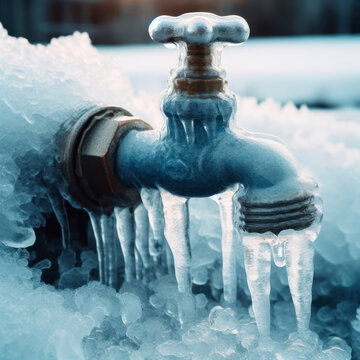Just how do you feel about Winter Plumbing Precautions: Preventing Frozen Pipes?

Cold weather can wreak havoc on your pipes, specifically by freezing pipelines. Below's exactly how to stop it from taking place and what to do if it does.
Introduction
As temperatures decrease, the danger of icy pipes boosts, possibly resulting in expensive repairs and water damage. Recognizing how to stop icy pipelines is important for house owners in cold environments.
Comprehending Frozen Pipes
What causes pipes to freeze?
Pipes ice up when exposed to temperature levels below 32 ° F (0 ° C) for expanded durations. As water inside the pipes freezes, it increases, taxing the pipe walls and potentially creating them to rupture.
Dangers and problems
Frozen pipelines can lead to water system interruptions, home damages, and expensive repairs. Burst pipelines can flood homes and trigger considerable structural damages.
Signs of Frozen Pipes
Identifying icy pipelines early can avoid them from bursting.
Exactly how to recognize icy pipelines
Try to find decreased water flow from faucets, uncommon odors or noises from pipes, and visible frost on subjected pipelines.
Avoidance Tips
Protecting at risk pipes
Wrap pipes in insulation sleeves or utilize warmth tape to safeguard them from freezing temperatures. Focus on pipes in unheated or outside areas of the home.
Home heating strategies
Keep interior rooms appropriately heated up, especially locations with plumbing. Open up cupboard doors to allow cozy air to circulate around pipelines under sinks.
Protecting Outside Pipes
Garden tubes and outside taps
Disconnect and drain pipes garden hoses prior to wintertime. Mount frost-proof spigots or cover outdoor faucets with shielded caps.
What to Do If Your Pipes Freeze
Immediate activities to take
If you think icy pipes, keep taps open up to eliminate stress as the ice melts. Use a hairdryer or towels taken in hot water to thaw pipes slowly.
Long-Term Solutions
Structural modifications
Take into consideration rerouting pipelines far from exterior wall surfaces or unheated areas. Include extra insulation to attic rooms, basements, and crawl spaces.
Upgrading insulation
Invest in premium insulation for pipes, attic rooms, and walls. Proper insulation helps keep constant temperatures and lowers the risk of icy pipes.
Final thought
Preventing frozen pipelines requires positive actions and quick actions. By recognizing the causes, indications, and safety nets, homeowners can secure their pipes throughout winter.
5 Ways to Prevent Frozen Pipes
Drain Outdoor Faucets and Disconnect Hoses
First, close the shut-off valve that controls the flow of water in the pipe to your outdoor faucet. Then, head outside to disconnect and drain your hose and open the outdoor faucet to allow the water to completely drain out of the line. Turn off the faucet when done. Finally, head back to the shut-off valve and drain the remaining water inside the pipe into a bucket or container. Additionally, if you have a home irrigation system, you should consider hiring an expert to clear the system of water each year.
Insulate Pipes
One of the best and most cost-effective methods for preventing frozen water pipes is to wrap your pipes with insulation. This is especially important for areas in your home that aren’t exposed to heat, such as an attic. We suggest using foam sleeves, which can typically be found at your local hardware store.
Keep Heat Running at 65
Your pipes are located inside your walls, and the temperature there is much colder than the rest of the house. To prevent your pipes from freezing, The Insurance Information Institute suggests that you keep your home heated to at least 65 degrees, even when traveling. You may want to invest in smart devices that can keep an eye on the temperature in your home while you’re away.
Leave Water Dripping
Moving water — even a small trickle — can prevent ice from forming inside your pipes. When freezing temps are imminent, start a drip of water from all faucets that serve exposed pipes. Leaving a few faucets running will also help relieve pressure inside the pipes and help prevent a rupture if the water inside freezes.
Open Cupboard Doors
Warm your kitchen and bathroom pipes by opening cupboards and vanities. You should also leave your interior doors ajar to help warm air circulate evenly throughout your home.

As a reader about Preventing and dealing with frozen pipes, I imagined sharing that piece was smart. Liked our write up? Please share it. Let someone else discover it. I praise you for your time. Revisit us soon.
Book Your Service